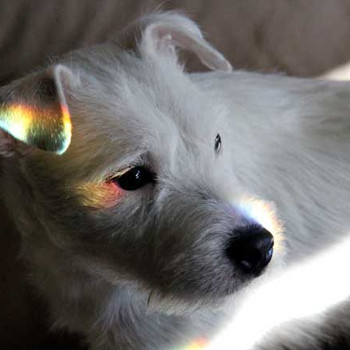Balanced Equation
#"CaCO"_3 + "2HCl"##rarr##"CO"_2 + "CaCl"_2 + "H"_2"O"#
The basic process will be:
#"mass reactant"##rarr##"mol reactant"##rarr##"mol product"##rarr##"mass product"#
First convert the masses of calcium carbonate #("CaCO"_3)# and hydrochloric acid #("HCl")# to moles by dividing the given mass by the molar mass of each compound #"100.086 g/mol"# for #"CaCO"_3#, and #"36.458 g/mol"# for #"HCl"#. Since the molar mass is a fraction, #"g"/"mol"#, divide by multiplying the given mass by the inverse of the molar mass.
#2.5color(red)cancel(color(black)("g CaCO"_3))xx(1"mol CaCO"_3)/(100.086color(red)cancel(color(black)("g CaCO"_3)))="0.0250 mol CaCO"_3"#
#2.5color(red)cancel(color(black)("g HCl"))xx(1"mol HCl")/(36.458color(red)cancel(color(black)("g HCl")))="0.0686 mol HCl"#
#color(red)("Calcium Carbonate: CaCO"_3"#
Theoretical Mass of #"CO"_2"#
Multiply mol #"CaCO"_3"# by the mol ratio between #"CaCO"_3"# and #"CO"_2"# from the blanced equation.
#0.0250color(red)cancel(color(black)("mol CaCO"_3))xx(1"mol CO"_2)/(1color(red)cancel(color(black)("mol CaCO"_3)))="0.0250 mol CO"_2"#
Determine the mass in grams of #"CO"_2"# produced by multiplying the mol #"CO"_2# by its molar mass #("44.009 g/mol")#.
#0.0250color(red)cancel(color(black)("mol CO"_2))xx(44.009"g CO"_2)/(1color(red)cancel(color(black)("mol CO"_2)))="1.1 g CO"_2"# (rounded to two sig figs due to #"2.5 g"#)
Theoretical Mass of #"CaCl"_2"#
Multiply the mol #"CaCO"_3"# by the mol ratio between #"CaCO"_3"# and #"CaCl"_2"# from the balanced equation.
#0.0250color(red)cancel(color(black)("mol CaCO"_3))xx(1"mol CaCl"_2)/(1color(red)cancel(color(black)("mol CaCO"_3)))="0.0250 mol CaCl"_2"#
Determine the mass in grams of #"CaCl"_2"# by multiplying the mol #"CaCl"_2# by its molar mass #("110.978 g/mol")#.
#0.0250color(red)cancel(color(black)("mol CaCl"_2))xx(110.978"g CaCl"_2)/(1color(red)cancel(color(black)("mol CaCl"_2)))="2.8 g CaCl"_2# (rounded to two sig figs due to #"2.5 g"#)
#color(blue)("Hydrochloric Acid: HCl"#
Theoretical Mass of #"CO"_2"#
Multiply the mol #"HCl"# by the mol ratio between #"HCl"# and #"CO"_2"# from the balanced equation.
#0.0686color(red)cancel(color(black)("mol HCl"))xx(1"mol CO"_2)/(2color(red)cancel(color(black)("mol HCl")))="0.0343 mol CO"_2"#
Determine the mass in grams of #"CO"_2"# produced by multiplying the mol #"CO"_2# by its molar mass #("44.009 g/mol")#.
#0.0343color(red)cancel(color(black)("mol CO"_2))xx(44.009"g CO"_2)/(1color(red)cancel(color(black)("mol CO"_2)))="1.5 g CO"_2"# (rounded to two sig figs due to #"2.5 g"#)
Theoretical Mass of #"CaCl"_2#
Determine the mol #"CaCl"_2#.
Multiply the mol #"HCl"# by the mol ratio between #"HCl"# and #"CaCl"_2"# from the balanced equation.
#0.0686color(red)cancel(color(black)("mol HCl"))xx(1"mol CaCl"_2)/(2color(red)cancel(color(black)("mol HCl")))="0.0343 mol CaCl"_2"#
Determine the mass in grams of #"CaCl"_2"# by multiplying the mol #"CaCl"_2# by its molar mass #("110.978 g/mol")#.
#0.0343color(red)cancel(color(black)("mol CaCl"_2))xx(110.978"g CaCl"_2)/(1color(red)cancel(color(black)("mol CaCl"_2)))="3.8 g CaCl"_2# (rounded to two sig figs due to #"2.5 g")#
Summary
#"2.5 g CaCO"_3"# produces #"1.1 g CO"_2# and #"2.8 g CaCl"_2#.
#"2.5 g HCl"# could produce #"1.5 g CO"_2"# and #"3.8 g CaCl"_2# only if there were more #"CaCO"_3"#. #"HCl"# is present in excess.
#"CaCO"_3"# is the limiting reagent.



